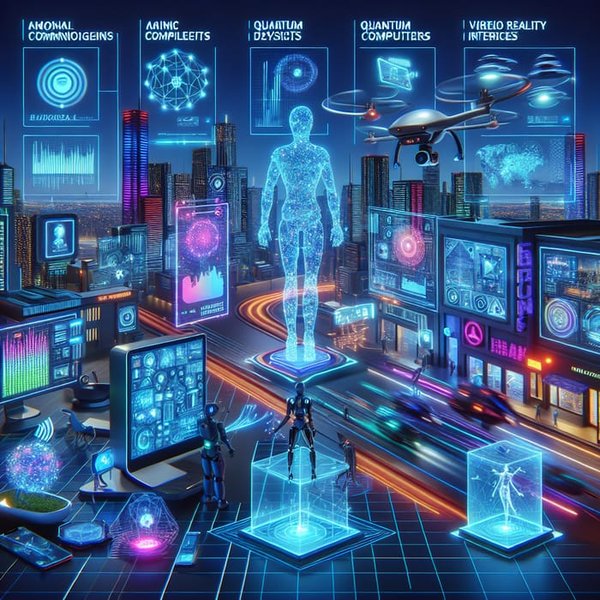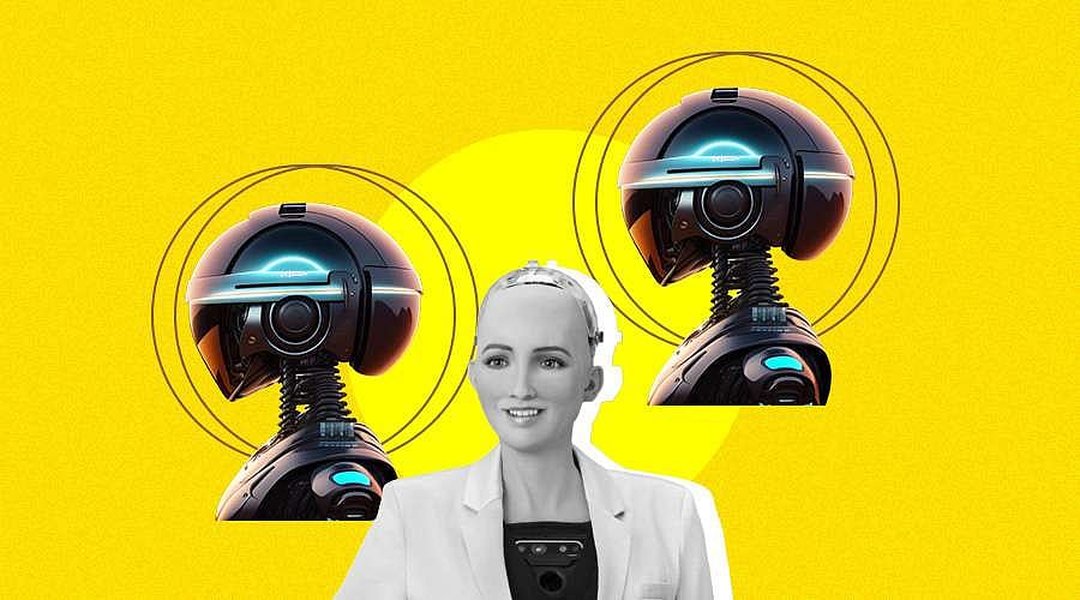
Understanding the Capabilities of Advanced AI
Comparing AI Models and Their Strengths in 2025
Artificial intelligence is rapidly advancing, with various models and tools demonstrating impressive capabilities across a wide range of tasks. While it's challenging to provide a direct, definitive comparison of every AI model's "power" in a single example, we can explore the different strengths and areas where current AI systems excel compared to others and to human intelligence.
As an AI assistant, my strength lies in my ability to aggregate and synthesize information from multiple sources, offering a comprehensive and well-rounded perspective. This allows me to provide a more nuanced understanding of complex topics by drawing on diverse insights, similar to how human intelligence integrates information from various experiences and knowledge domains.
Key Highlights of Advanced AI Capabilities
- Data Analysis and Speed: AI excels at processing and analyzing vast datasets with incredible speed and precision, far surpassing human capabilities in repetitive or data-intensive tasks.
- Task-Specific Proficiency: Many advanced AI models demonstrate remarkable proficiency in specific domains, such as natural language processing, code generation, or image creation, often outperforming general-purpose AI in those areas.
- Scalability and Endurance: Unlike humans, AI systems can operate continuously without fatigue, making them ideal for large-scale operations and tasks requiring sustained effort.
AI vs. Human Intelligence: A Complementary Relationship
The comparison between artificial intelligence and human intelligence is a fundamental aspect of understanding AI's capabilities. While AI is designed to mimic certain cognitive functions, it differs significantly from the depth and breadth of human intellect. Human intelligence encompasses creativity, intuition, emotional understanding, and the ability to learn from limited data and experiences, areas where AI still faces considerable challenges.
AI systems are particularly strong in tasks that are data-driven and require high levels of precision and speed. Examples include complex calculations, identifying patterns in large datasets, and automating repetitive processes. Human intelligence, on the other hand, excels in situations requiring adaptability, ethical judgment, empathy, and understanding nuanced contexts.
Where AI Shines
AI's strengths are particularly evident in:
- Data Processing and Analysis: AI can process and analyze massive amounts of data at speeds impossible for humans. This is crucial in fields like scientific research, financial analysis, and medical diagnostics.
- Automation of Repetitive Tasks: AI is highly effective in automating routine and monotonous tasks, freeing up human workers for more complex and creative endeavors.
- Pattern Recognition: AI algorithms are adept at identifying intricate patterns in data that might be invisible to human observers.
- Speed and Efficiency: AI systems can perform calculations and execute tasks with exceptional speed and efficiency, operating continuously without needing rest.
The ability of AI to handle vast amounts of data is a significant differentiator. Human intelligence, while capable of deep understanding and complex reasoning, is limited by cognitive capacity and processing speed when dealing with enormous datasets.

A futuristic depiction of advanced artificial intelligence technology.
Where Human Intelligence Excels
Despite the advancements in AI, human intelligence remains superior in several key areas:
- Creativity and Innovation: The capacity for original thought, artistic expression, and generating novel ideas is a hallmark of human intelligence.
- Emotional Intelligence and Empathy: Understanding and responding to human emotions, building relationships, and exercising empathy are areas where AI is currently limited.
- Ethical Judgment and Decision Making: Navigating complex ethical dilemmas and making value-based decisions requires human moral reasoning.
- Adaptability and Learning from Limited Data: Humans can learn and generalize from a few examples or experiences, while many AI systems require vast amounts of data for training.
- Understanding Context and Nuance: Human intelligence excels at understanding subtle social cues, cultural contexts, and the nuances of language and situations.
The ability to understand and relate to the feelings of others is a fundamental aspect of human intelligence that AI systems struggle to emulate. This capacity for empathy is crucial in fields like healthcare, education, and interpersonal communication.
Top AI Models and Their Capabilities in 2025
The landscape of AI models is constantly evolving, with new and more powerful systems emerging regularly. As of 2025, several AI models are recognized for their advanced capabilities in various domains. These models often specialize in different types of tasks, making a direct "most powerful" comparison difficult without specifying the criteria.
Leading AI Chatbots and Language Models
Large Language Models (LLMs) are at the forefront of natural language processing and generation. Some of the leading models in 2025 include:
- ChatGPT (GPT-4o and other models): Developed by OpenAI, ChatGPT remains a prominent AI chatbot, known for its comprehensive responses and ability to handle a wide range of conversational tasks, including writing, coding, and summarizing. The latest models like GPT-4o aim for more natural and efficient interactions.
- Gemini (Gemini 1.5 Pro, Gemini-Exp-1206): Google's Gemini models are powerful multimodal AI systems designed to understand and operate across text, code, audio, image, and video. Gemini Advanced, powered by Gemini 1.5 Pro, is noted for its advanced reasoning and long context window, capable of analyzing extensive documents.
- Claude: Developed by Anthropic, Claude is another strong contender in the AI chatbot space, recognized for its capabilities in text analysis and generation, particularly in handling longer contexts.
- DeepSeek V3 and DeepSeek R1: These models, particularly DeepSeek V3, have demonstrated strong performance in coding tasks, passing many real-world programming tests.
- Llama 3: Meta's open-source LLM, Llama 3, is also a significant player, contributing to the broader accessibility and development of AI.
These models differ in their architectures, training data, and specific strengths. For example, some may be better at creative writing, while others excel at technical tasks like code generation or data analysis.
Specialized AI Tools
Beyond general-purpose chatbots, many specialized AI tools are designed for specific tasks:
- Synthesia: An AI video generation platform that converts text into videos, offering features like adding animations and editing elements within the video.
- Jasper AI: A tool primarily focused on content writing for marketing, suitable for creating website copy and social media campaigns.
- FeedHive and Vista Social: AI-powered social media management tools that help with scheduling posts, analyzing performance, and in the case of Vista Social, offering more advanced social listening.
- AI for Coding (e.g., GitHub Copilot): Tools specifically designed to assist developers in writing code, suggesting lines of code and identifying errors.
These specialized tools often leverage underlying AI models but are tailored to specific use cases, demonstrating high proficiency in their designated areas.
Benchmarking and Evaluating AI Performance
Comparing the "power" of different AI models is often done through benchmarking, which involves evaluating their performance on a standardized set of tasks. Various benchmarks exist to assess different aspects of AI capabilities, such as language understanding, reasoning, coding, and more.
However, benchmarks have their limitations. Real-world performance can vary depending on the specific use case, the quality of the input data, and the way the AI is integrated into a workflow. Subjective evaluation and practical testing are often necessary to determine the most suitable AI for a given task.
Factors Influencing AI Performance
Several factors contribute to the perceived "power" and effectiveness of an AI model:
-
Model Architecture: The underlying design and structure of the AI model significantly impact its capabilities.
-
Size and Quality of Training Data: The amount and relevance of the data used to train the AI model are crucial for its performance.
-
Computational Resources: The processing power and infrastructure used to train and run the AI model play a significant role.
-
Algorithmic Advancements: Ongoing research and development in AI algorithms lead to more efficient and capable models.
-
Integration and Fine-tuning: How well an AI model is integrated into a system and fine-tuned for a specific task can greatly affect its performance.
Energy Consumption of AI
While AI offers impressive capabilities, it's important to consider its energy consumption. Training and running large AI models require significant computational resources, which in turn consume substantial amounts of energy. For example, interacting with generative AIs can consume significantly more electricity than traditional online searches.
Efforts are being made to improve the energy efficiency of AI systems. This includes developing more efficient algorithms, optimizing hardware, and exploring sustainable data center practices. Initiatives like AI Energy Score ratings are emerging to provide transparency on the energy footprint of different AI models.

An illustration representing some of the world's advanced AI systems.
The Future of AI: Augmentation, Not Replacement
The prevailing view among experts is that AI will primarily augment, rather than completely replace, human intelligence in many domains. By combining the strengths of AI (speed, data processing, automation) with the strengths of human intelligence (creativity, empathy, ethical reasoning), we can achieve outcomes that are not possible with either alone.
The focus is shifting towards developing AI-powered agents and tools that can work alongside humans, enhancing productivity and enabling new forms of innovation. This collaborative approach, where humans and AI complement each other, is seen as the most promising path forward.
Comparison Table: AI vs. Human Intelligence
To further illustrate the differences and complementary nature of AI and human intelligence, here is a table summarizing their key characteristics:
| Feature | Artificial Intelligence | Human Intelligence |
|---|---|---|
| Processing Speed | Extremely High | Relatively Lower |
| Data Handling Capacity | Very Large Datasets | Limited by Cognitive Capacity |
| Creativity and Innovation | Limited, Data-Driven | High, Novel Idea Generation |
| Emotional Intelligence | Limited | High, Empathy and Understanding |
| Ethical Judgment | Rule-Based, Lacks True Moral Reasoning | Complex, Value-Based |
| Learning from Data | Often Requires Large Datasets | Can Learn from Limited Data/Experiences |
| Adaptability to Novel Situations | Can Struggle with Unforeseen Circumstances | High, Generalization and Problem Solving |
| Endurance and Consistency | High, Operates Without Fatigue | Limited, Subject to Fatigue and Variability |
Relevant Video on AI Model Comparison
Understanding the nuances of different AI models often involves looking at practical comparisons and benchmarks. The following video provides insights into comparing various AI models based on different factors, which can help illustrate how their capabilities are evaluated.
This video compares several top AI models based on factors like input size, cost, and features, offering a practical perspective on their differences.
Frequently Asked Questions
What is the primary difference between AI and human intelligence?
The primary difference lies in their nature and capabilities. AI is based on algorithms and data, excelling in speed, precision, and data processing. Human intelligence is a complex biological and cognitive process encompassing creativity, intuition, emotional understanding, and adaptability.
Will AI replace human jobs in the future?
While AI may automate certain routine tasks, the general consensus is that AI will likely augment human capabilities rather than completely replace jobs. The focus will shift towards skills that leverage human strengths like creativity, critical thinking, and emotional intelligence.
How is the "power" of an AI model measured?
The "power" or capability of an AI model is typically measured through benchmarks that evaluate its performance on specific tasks like language understanding, reasoning, or coding. However, real-world performance can vary based on the application.
What are some of the most advanced AI models in 2025?
As of 2025, some of the most advanced AI models include ChatGPT (various models), Gemini (especially 1.5 Pro), Claude, DeepSeek V3, and Llama 3. The "most advanced" often depends on the specific task or domain.
Does AI consume a lot of energy?
Yes, training and running large AI models require significant computational resources and thus consume substantial amounts of energy. Efforts are underway to improve the energy efficiency of AI systems.
References
Last updated May 4, 2025